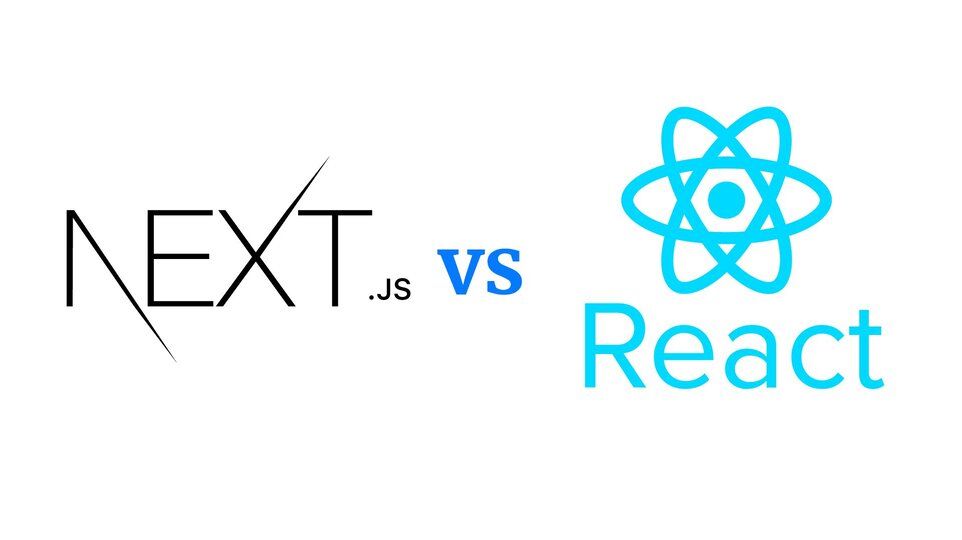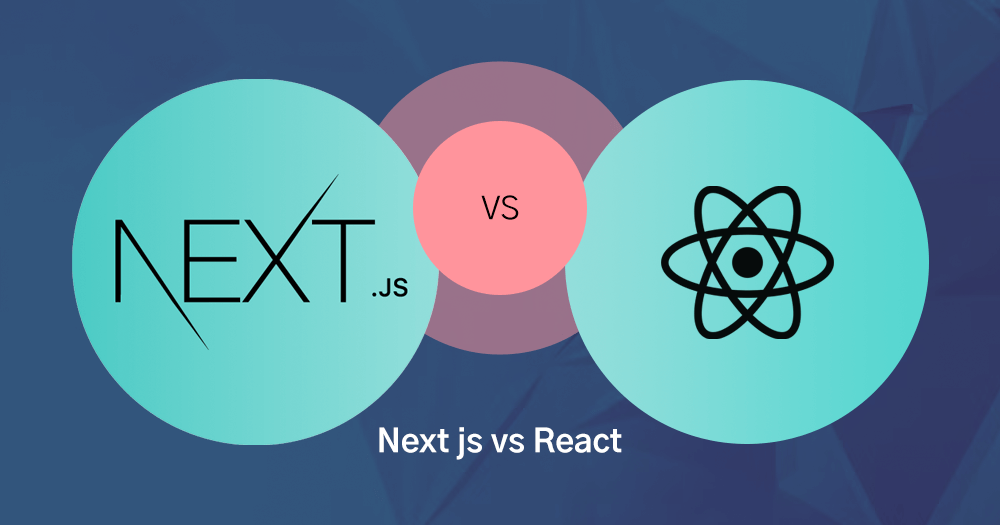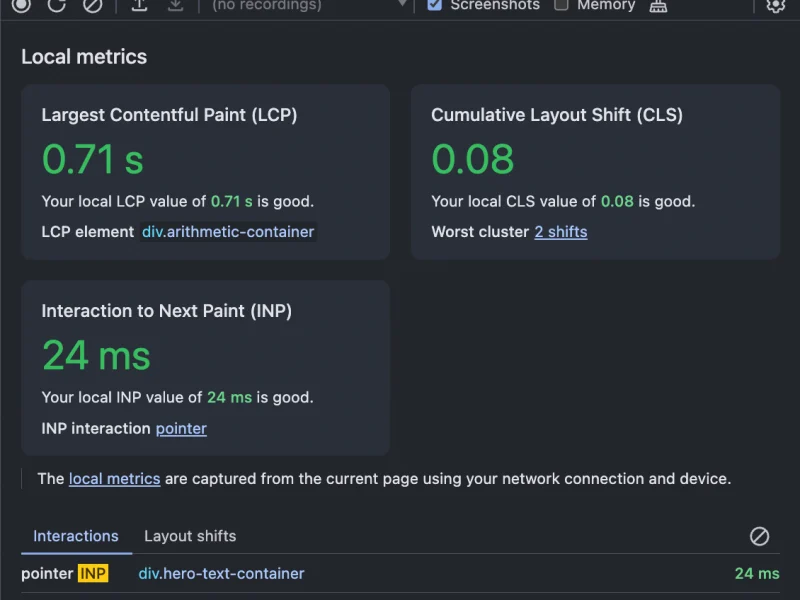No matter how big or small, creating a project takes work. Software developers and companies now have a lot more options thanks to modern technology. With so many options available, choosing the best or most appropriate technology for your project can be challenging.
React and Next.js are currently the two most widely used tools for front-end web development. The query is: which of the two ought to you employ? Which of the two is superior? This post will discuss these two well-liked tools, their benefits and drawbacks, and everything you need to know to make the best decision. It will assist you in reaching your objectives.
The distinction between Next.js and React’s Javascript Libraries and Frameworks

Understanding Framework and Libraries is a prerequisite for understanding Next.js and React.
A framework is a set of programs and resources used in web application development. Using frameworks gives you access to a multitude of libraries, which when combined allow you to quickly create a highly functional application. With frameworks, you can get started on projects quickly because they offer low-level functionality.
Libraries, on the other hand, give you command over how an application operates. This is the primary distinction between the two: with a framework, the flow is out of your control. Libraries can be used to streamline the application development process.
What is Next.js?

Vercel created the open-source framework Next.js. For creating single-page apps, it integrates with React and is built on top of Node.js and Babel. This makes using Next.js for server-side rendering simple.
Pre-rendering and static export are supported by Next.js, which also offers appealing features like automatic size optimization and quicker developer compilation. To put it briefly, it contains every feature a developer could possibly require to produce a finished application.
A basic explanation for the recent surge in popularity of Next.js is that there has been a persistent problem with JavaScript rendering in developers’ browsers. Next.js is one of the suggested React toolchains because of its usefulness in providing a layer of abstraction to straightforward tasks inside the framework. It does this by enabling the creation of dynamically rendered and static loading webpages.
Since the majority of the work is now done on the server, this significantly enhances the user experience; however, Next.js still permits that CSR. Compared to React, which renders all content in the client-side browser resources, Next.js allows apps to render content on the server, giving them more flexibility. Some client-side rendering problems with the React library can be resolved by using this procedure.
Next.js is used by a number of the most popular platforms worldwide, including Hulu, Binance, TikTok, and Twitch.tv. These platforms handle complex data influxes involving millions of users. Here are a few Next.js features:
Data Fetching
Next.js offers two different kinds of pre-rendering. The first is server-side rendering, which enables the timely retrieval and rendering of data. The other is Static Generation, which makes use of build-time data prior to a request being made.
Typescript
Because it is a programming language that expands upon JavaScript, developers find it to be quite popular.
Redux
Next.js supports Redux seamlessly.
What is React?

Facebook created React, which is currently one of the most widely used front-end libraries. It is a JavaScript framework that makes use of the functional programming paradigm and reactive methodology. It is regarded less as a framework and more as a library.
React is used to create dashboards, visualization tools, dynamic mobile apps, and SEO-friendly websites. A few well-known platforms and apps that use it are Airbnb, Netflix, and Facebook.
Additionally, you can investigate Agility CMS, a top-tier React CMS that enables you to create digital experiences with React.js.
Below are some features of React:
Virtual DOM
Document Object Model is known as DOM. Code is run through the modules that make up the web. It is the most important component. The virtual DOM in React is a copy of the actual DOM.
One-way Data Binding
The term “one-way data binding” itself describes the idea of a one-way data flow. Data in react can only flow in one direction. The information flows from parent to child elements and from top to bottom. This maintains everything organized.
Extension
Many React extensions are available to us for use in building full UI applications. React offers server-side rendering and is compatible with mobile applications.
Simplicity
React.js’s component-based architecture allows for code reuse. JSX, a language that combines HTML and Javascript, is also used by React.js. As a result, there is less code and it is simpler to understand and debug.
Why compare React vs Next.js?

You must be wondering why it is necessary to compare the two in the first place. Comparisons are made for a variety of reasons. The primary factor is the developer’s background. These days, developers typically select a simple and enjoyable tool to use. Next.On top of React, js is used to enhance its functionality and streamline the development process.
Building a project with Next.js and React differs in experience. Thus, determining which is a better option for you requires an understanding of how the two differ from one another.
Advantages – React and Next.js
By examining the benefits of each, we can comprehend them both more fully.
Simple to code: Thanks to Javascript, React has made web application development simpler since its release. It has made it possible for developers to quickly and with less coding create dynamic applications in a known language.
Components: React allows you to create reusable components. They can be used to repeatedly load different pages while retaining their properties. Any modifications you make to the primary component code will be displayed on every page. Developers can save a ton of time with it.
Community: The district’s assistance and support is one of the most important factors to consider when selecting a framework. React makes a wealth of production resources available. It facilitates easy work.
Customization: As previously indicated, it functions more like a library and has a set of features that can be increased by adding more tools.
The aforementioned benefits render React appealing.
Given all that React has to offer, why even consider Next.js?

Here are a few benefits of Next.js.Developers employ it for any one of the following purposes:
Super easy to code
Next.js has incredibly simple coding when compared to other frameworks on the market, such as React. Why? Because developers only need to create the page and include a link to the component in the header, Next.js requires less code. Better readability and reduced code translate to better project management overall.
Fast Rendering
When you refresh the page, any changes you make to a file are immediately visible. You can see real-time feedback on how your modifications are affecting the application because the components are rendered instantaneously.
Speed
Any application’s ability to function properly depends on its speed, which Next.js manages. Static Generation combined with server-side rendering makes the application built on this framework run faster. Performance is further enhanced by a native image optimization feature that is included.
Better image optimization
The best formats are used for resizing and serving images, and images are set up to fit into smaller viewports.
SEO
The majority of applications strive for improved page titles, keywords, and Google ranking. The featured Head components can be used with Next.js.
API support
If you want to grow your application, you might want to communicate with third-party API. Next. You can accomplish it with js since it makes connecting to APIs simple.
Disadvantages – React and Next.js
Simply considering the benefits won’t help you choose which one to utilize. You will need to consider the drawbacks and make a decision based on both so that your project can be completed to perfection.
Below are the disadvantages of React:
You need other tools
A library called React is dedicated to user interface development. The development of applications involves much more. To get the most out of it, you will therefore need extra tools.
Documentation issue
Because React development cycles are so short, the documentation that is currently available becomes useless very quickly. Even with strong community support, it necessitates frequent relearning of its features.
Below are some disadvantages of Next.js.
They can also be thought of as less user-friendly features:
Routing
Next.js has a routing system which is a file system. For some projects, it is not enough.
Long build times
Despite requiring less code, creating large applications with Next.js takes longer.
Community
The Next.js community is small but developing. When it comes to experts, Next.js has less than React and other frameworks combined.
Final Verdict – Which is better, Next.js or React?
One of the two frameworks has a distinct advantage over the other, so if your requirements are clear, you can choose that one. Next.js is a useful tool for developing:
Landing page
Next.js can easily create a landing page for you if your requirements are simple, and the marketing team will be pleased to use the landing page that Next.js creates.
SEO is of prime importance
Next.js is the better option if you want your website to be search engine friendly. In terms of SEO, it offers you a competitive advantage. You should be free to decide whether or not you wish to boost your organic traffic—we’ve already covered the reasons.
For marketing websites
The load time should be reduced because your application will be viewed on the server, and Next.js takes care of that for you.
With the help of the comprehensive e-commerce starter kit provided by eCommerce store, developers can create high-converting, Google-friendly online stores.
However, if your application consists of numerous components with various, often-changing states, expanded/collapsed accordion sections, username, permissions, etc., then you should use React. You can accomplish more with your application by utilizing React with Agility as well.

Javier is Content Specialist and also .NET developer. He writes helpful guides and articles, assist with other marketing and .NET community work



